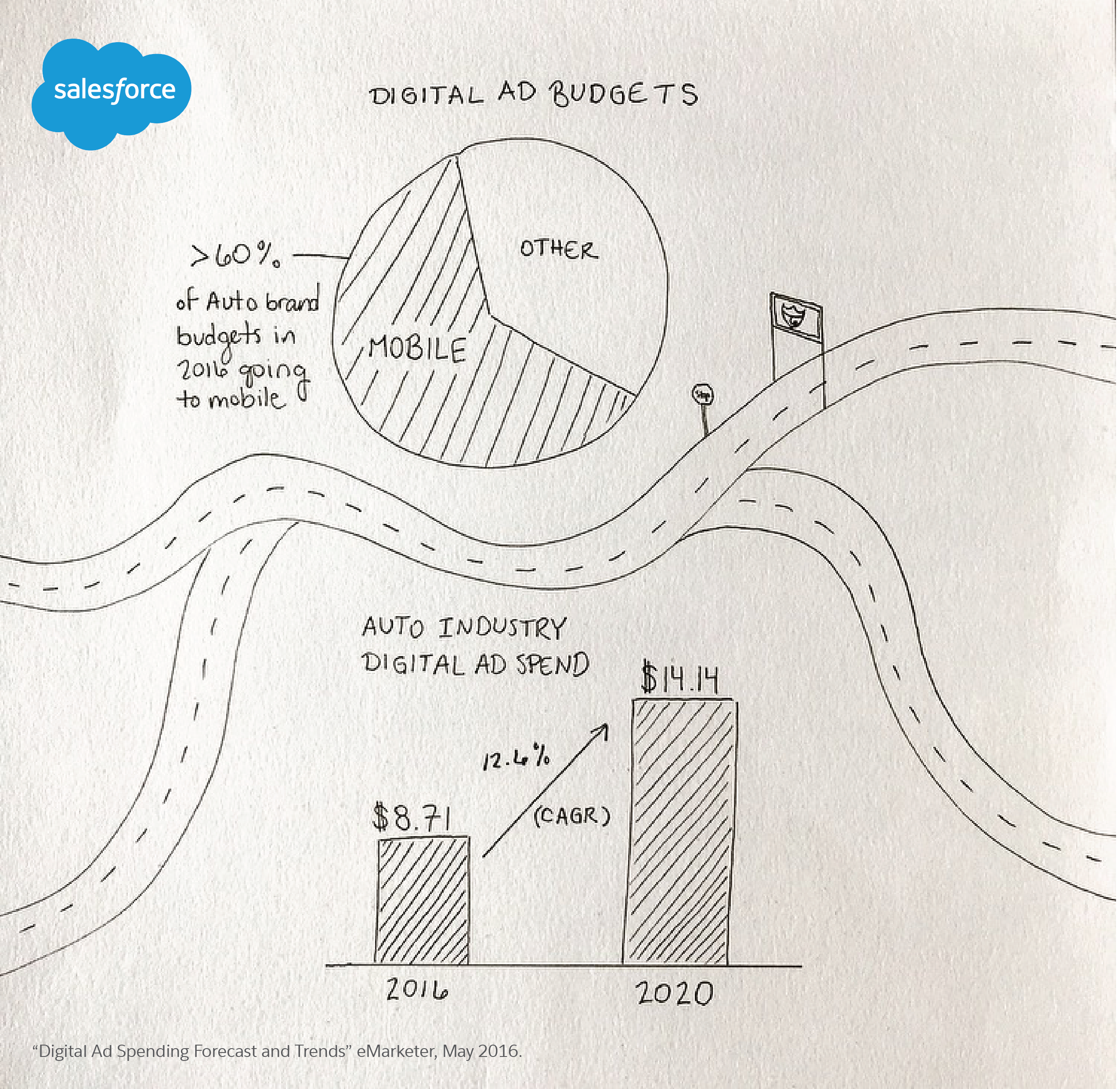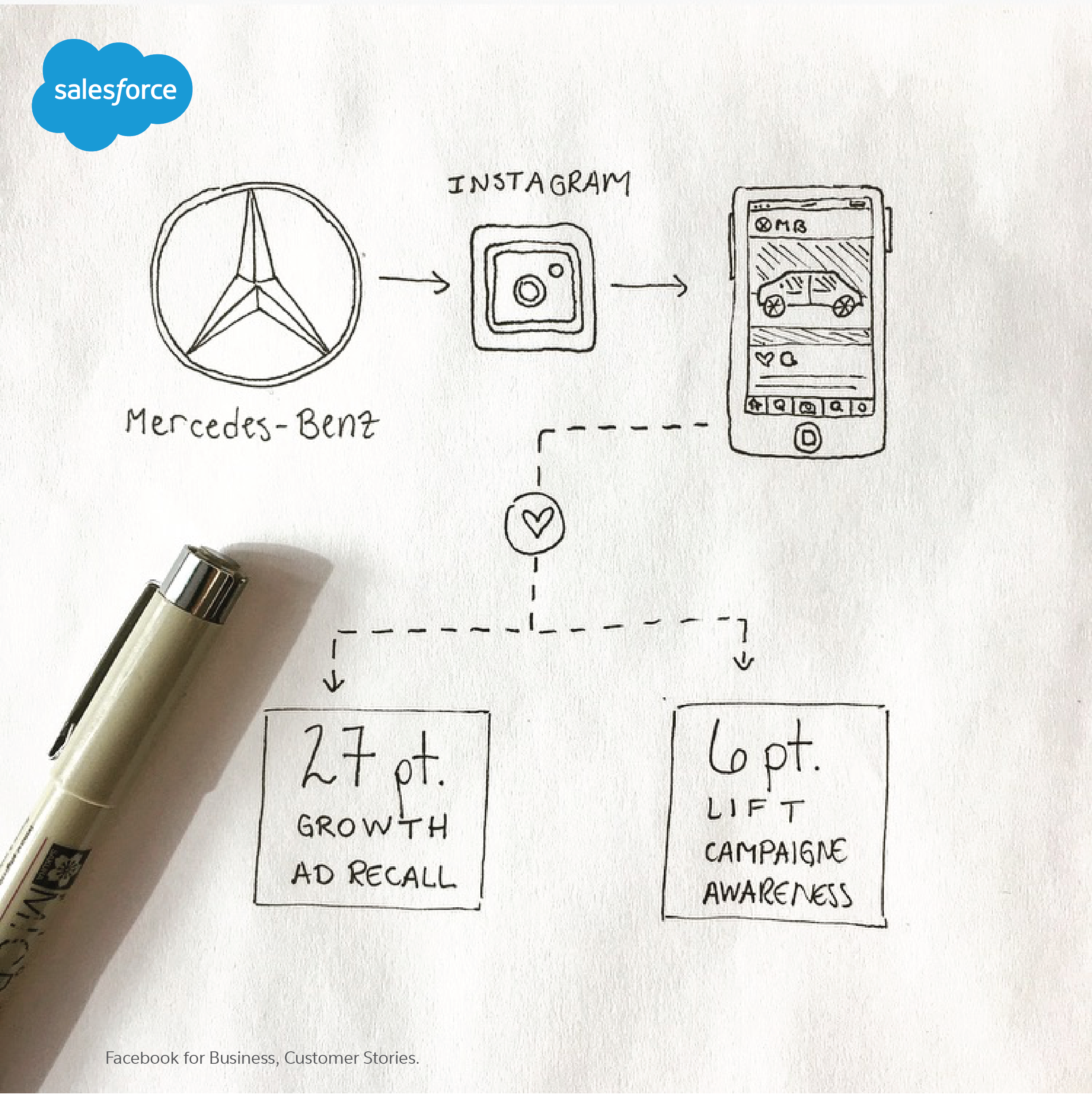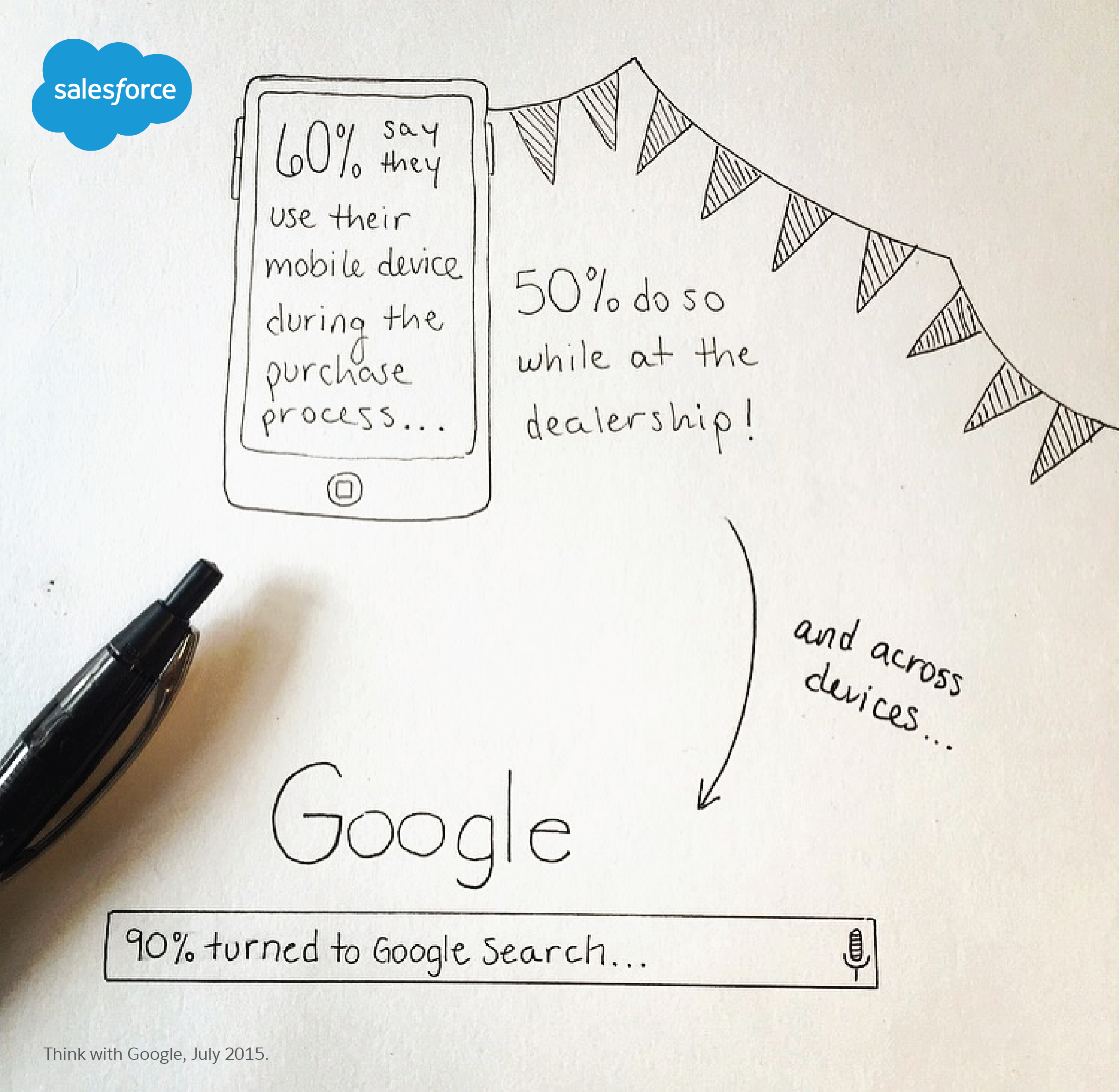
Get your FREE 30-day trial.
Please complete all fields.
For most of us, buying a new car is a major purchase--and it's hasn't always been easy. Traditionally, buyers start by visiting dealership after dealership to decide the right auto brand. Today, this whole process has become easier and more efficient thanks to technology. While the importance of research and time in finding the right car hasn't changed, the methods in which we do so has, and for the better. Why am I telling you this? As advertisers, marketers, and even sales persons, this growth in digital advertising affects us all.
This year, the US automotive industry will spend $8.7 billion on paid digital media. By 2020, spend is forecasted to reach $14 billion, a compound annual growth (CAGR) of 12.6%, the highest CAGR of any US industry, after entertainment. Possibly the most interesting trend of all is the shift in spend on mobile advertising, owning 60% of total digital ad spend in the auto industry. Since 2015, US consumers have seen a general decrease in gas prices and low interest rates-all of which have lead to an increase in car sales, which reached a record high in 2015. This increase in consumer interest has many brands (including General Motors, Toyota, and Ford) to launch new models. It's because of all of this that budgets for marketing and advertising have and continue to increase.

This trend in digital ad spend is mirroring that of digital channel usage, which is replacing and/or supplementing much of the purchase journey for car buyers. In Australia, 90% of car buyers surveyed turn to Google Search for a more efficient research process while shopping for cars, more than 50% saying they'd consider buying a car online. Instead of visiting multiple dealerships to compare brands, buyers can now compare brands, models, colors, and prices on multiple devices, all at the same time, and in a matter of minutes.
However, the customer journey to purchasing a car is more than just a single interaction or ad. Buying a car isn't as simple as seeing an ad for new cars in their newsfeed and clicking "purchase." This means that, while drivers are in the midst of researching, advertisers should utilize website conversion ads to send users to a website to find out more information. In addition, automotive advertisers need to create brand awareness ads to get people to fall in love with their brand. Take Mercedes-Benz, who created a brand awareness campaign on Instagram to show off their autonomous driving cars in hopes of being the top-of-mind brand for autonomous driving. Mercedes-Benz chose to focus on the aesthetics of the car and used a series of visually appealing photo ads to show the car as a vision of a future. As a result, the brand saw a 27 point growth in brand recall, and a 6 point lift in campaign awareness.

Of surveyors, 60% said they used their mobile devices during the purchase process, and 50% research on their phones while at the dealership. So advertisers would be smart to use location-based targeting to bring in local drivers that are actively searching for a new car. They need to make sure that their dealership's contact information is top of a user's Google Search results. While they're at it, why not take advantage of Facebook Lead Ads which automatically fill out users' personal data in Facebook into a form, making it easy for users to sign-up for test drives, without hassle. A California Honda dealership found great success, using Spanish and English lead ads and personalized targeting to reach people most likely to be searching for a Honda vehicle. Traditionally the brand used engagement-focused Facebook campaigns, but wanted to go beyond the likes and comments to drive more high-quality leads. As a result, they saw a 62% decrease in cost per lead, with 72% of collected leads being Spanish-speaking thanks to their personalized targeting efforts.

To learn more about the opportunities that exist today in digital advertising across all industries, check our latest eBook, The Future of Advertising.